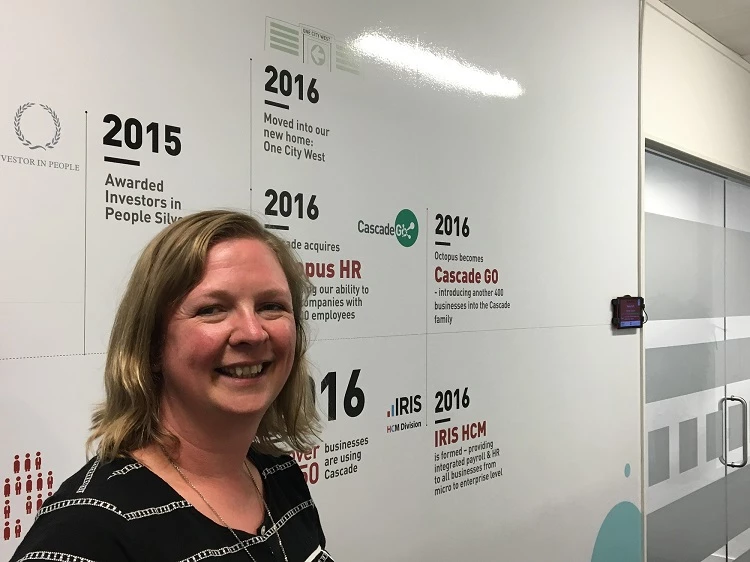
Member Article
Top 10 tips to remove payroll pain at year end
The end of the financial year is known for being frantic, but there are many ways to avoid encountering ‘payroll pain’, believes Claire Treadwell, senior bureau manager at Cascade Payroll Managed Services. Here, she shares her top 10 tips…
1. Be prepared
Ensure all information is to hand, and if any payroll data is outstanding, actively chase line managers if necessary. This will help to avoid the need for any corrections in the next tax year.
2. Beware of deadlines
The deadlines are now looming but there is still time to prepare in advance, providing all cut off dates are acknowledged quickly. The final FPS payroll report of the year should be submitted on or before employees’ payday. Employee payroll records and payroll software should then be updated from 6th April.
3. Reconcile all previous months
Check previous reports against the HMRC website to make sure they balance, and if they don’t, investigate why. This will make life so much easier before the deadline and prevent any need for Early Year Updates.
4. Research the submissions required
RTI submissions can be confusing, so it is important to understand exactly which ones need to be made. If employees are paid in a final pay period, only an FPS is relevant, whereas if no employees are paid in the final pay period of the tax year, only an EPS is necessary. However, an FPS and EPS submission will both be required if employees are paid in the final pay period, but the FPS has not been marked as the final submission of the year, the FPS has been sent early, there was one or more full tax months when employees weren’t paid, and statutory payments need recovering.
5. Remember the Apprenticeship Levy
If the organisation has hit the Apprenticeship Levy threshold, even once, this also indicates the need to submit an EPS. This will ensure that the correct amounts are showing against the company’s record.
6. Consider the treatment of benefits
All employee benefits can be payrolled except employer-provided living accommodation and interest free/low-interest loans. HMRC must be notified before the start of the new tax year. Investigate this as an option and, if interested, register online.
7. Prepare for new legislation
Research the latest payroll legislation to ensure comprehensive preparation for the new tax year. The HMRC is undoubtedly the most trusted source for such information. Communication with employees is also paramount so relevant updates should be passed on to them too.
8. Use it as an opportunity to review and tidy up payroll
The financial year end is a timely opportunity for a spring clean. It is important to periodically review all payroll elements and query which ones are still used, is the payroll process still fit for purpose and are any changes required to drive improvement?
9. Test payroll software
Ensure everything is working in the payroll software as it should, by actively testing it. Interrogate some of the data and carry out a manual payroll calculation to double check that the sums add up in line with the latest legislation.
10. Create a checklist
Devise a year end checklist, use it, update it for the following year and use it again. This is the easiest way to tick every box without missing anything.
This was posted in Bdaily's Members' News section by Katie Mallinson .
Enjoy the read? Get Bdaily delivered.
Sign up to receive our popular Yorkshire & The Humber morning email for free.




 test article 123456789
test article 123456789
 hmcmh89cg45mh98-cg45hm89-
hmcmh89cg45mh98-cg45hm89-
 test456456456456456456
test456456456456456456
 test123123123123123123
test123123123123123123
 test xxxdiosphfjpodskhfiuodsh
test xxxdiosphfjpodskhfiuodsh
 Savour the flavour: North Tyneside Restaurant Week returns for 2024
Savour the flavour: North Tyneside Restaurant Week returns for 2024
 Six steps to finding the right buyer for your business
Six steps to finding the right buyer for your business
 Stephen signs off on a special night
Stephen signs off on a special night
 Life’s a Peachaus: Gillian Ridley Whittle
Life’s a Peachaus: Gillian Ridley Whittle
 Making a splash: Phil Groom
Making a splash: Phil Groom
 Making workplace wellbeing a priority
Making workplace wellbeing a priority
 A record of delivery, a promise of more: Ben Houchen
A record of delivery, a promise of more: Ben Houchen